Can You See The ISS With Binoculars?
Are you curious about observing the International Space Station (ISS) with binoculars?
If so, you’re in the right place! The ISS is a fascinating object to observe in the night sky, and binoculars can help enhance the viewing experience.
In this discussion, we will explore the possibilities for spotting the ISS with binoculars with extremely useful tips. We will also discuss different factors that can affect the viewing experience.
So, let’s dive in and find out, can you see the International Space Station with binoculars?
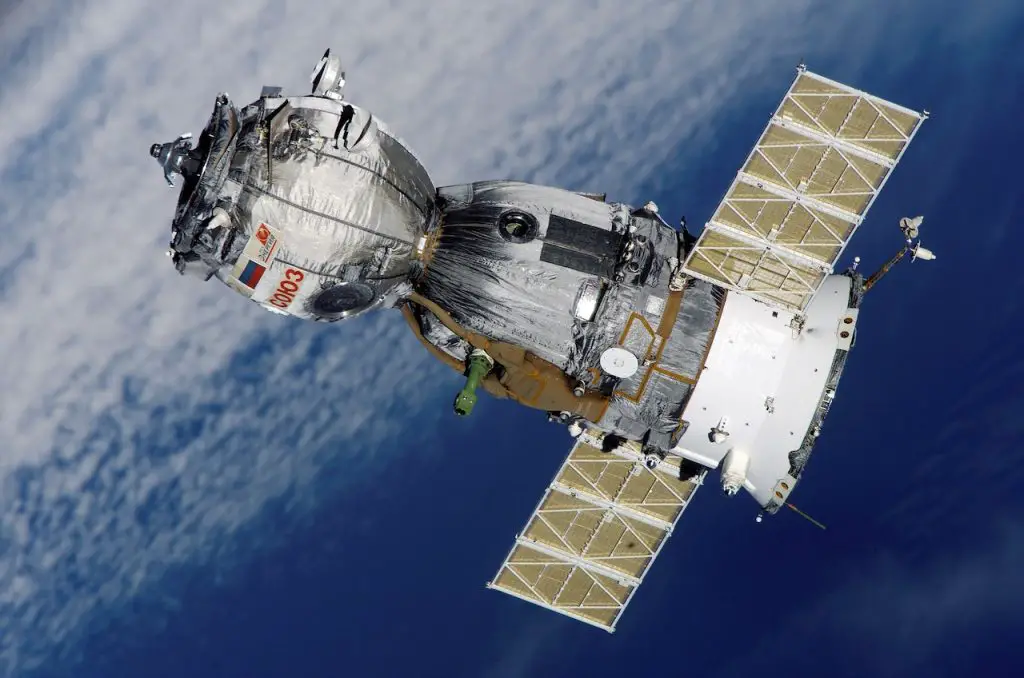
ISS’s Orbit and Visibility
The ISS orbits the Earth at an altitude of approximately 408 kilometers (253 miles).
It completes an orbit every 90 minutes, meaning it orbits the Earth approximately 16 times per day.
The International Space Station (ISS) looks different from the sleek, wheel-shaped space stations commonly depicted in science fiction movies because they are not practical or affordable to build.
The ISS is made up of various parts and has solar arrays on either side that collect energy from the sun to power the station.
The modules, which are pressurized rooms and labs, are joined together by tubes or cylinders where astronauts live and work.
The ISS is visible from Earth because it reflects sunlight off its solar panels, making it visible in the night sky.
In recent years, the ISS has become more prominent, and it can be seen without expensive equipment or deep knowledge of the night sky, as long as you know what time to look for it.(We will discuss)
Factors That Affect the Visibility of the ISS with Binoculars
One of the main factors that affect the visibility is the altitude of the ISS.
When the ISS is closer to the horizon, it may be difficult to see with binoculars due to atmospheric distortion.
Additionally, weather conditions and light pollution can also affect the visibility of the ISS.
Why Binoculars Not Telescopes For ISS?
Binoculars are better suited for spotting the International Space Station (ISS) compared to telescopes because the ISS moves very quickly across the sky, covering a vast distance in a short time.
Telescopes have high magnification eyepieces, making it hard to track the rapid movements of the ISS, and even harder to keep it in view.
Binoculars, on the other hand, have a lower magnification, which makes it easier to follow the ISS’s movements as it passes overhead.
Additionally, binoculars have a wider field of view, allowing you to capture the entire station in your sight, enhancing its brightness and making it look bigger and clearer.
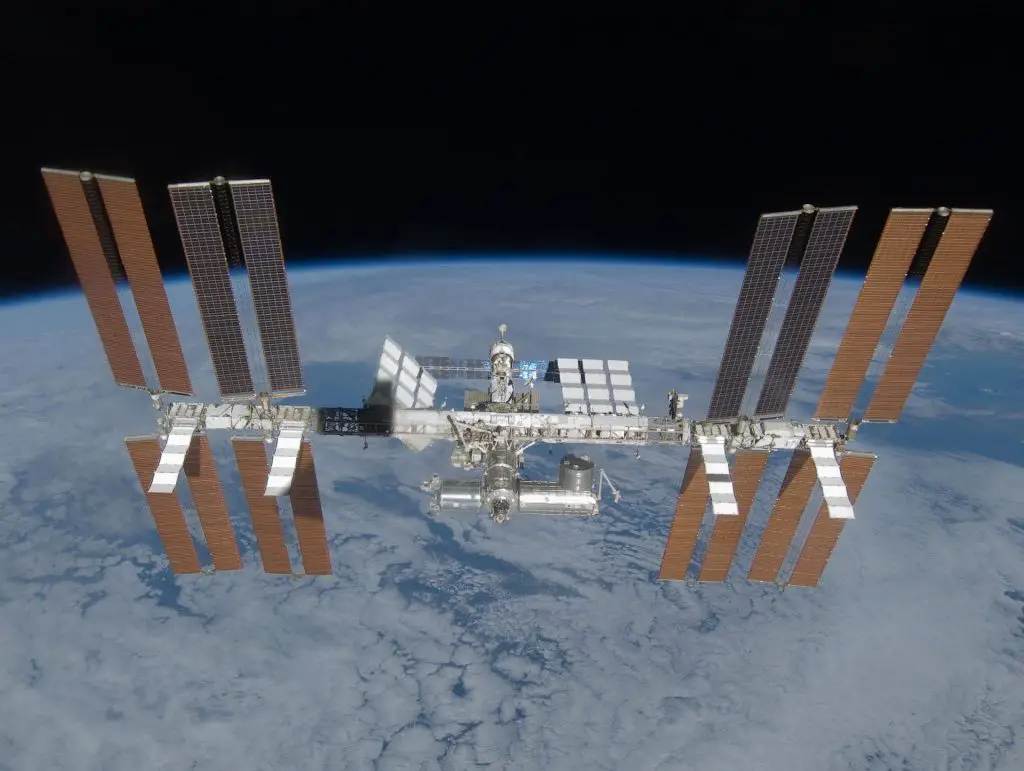
How Does ISS Look When You See Through A Pair Of Binoculars
Well, with a pair of binoculars, you can get a breathtaking view of this incredible feat of human engineering.
As you focus your binoculars on the ISS, its shape begins to take form. The solar arrays on either side of the station stand out, reflecting the sun’s rays and giving the ISS a brilliant golden hue.
With every passing moment, the ISS seems to grow bigger and brighter, making it a sight to behold.
But as the ISS moves across the sky, its golden glow starts to fade, and it takes on a dark ruddy color, resembling a fading ember. And yet, it still captures your imagination and fills you with wonder at the vastness of space.
Tips for Spotting the ISS with Binoculars
Here is a detailed step-by-step procedure to locate the ISS for viewing through binoculars or telescopes.
Step 1: Check ISS Visibility & Use A Tracking App
Before attempting to locate the ISS through binoculars, it is essential to check its visibility.
The ISS is visible to the naked eye, but it is easier to spot when it is high in the sky and during certain times of the day.
To check its visibility, visit NASA’s Spot the Station website or use an app such as ISS Detector, which provides real-time information about the ISS’s position.
Let me elaborate on the above;
Firstly, find out the time the ISS will rise above the horizon in your area.
You can do this by checking online or using apps on your smartphone or tablet. On these sites enter your city or town, click next and it will show you the schedule when you can expect to observe ISS in your area.
Once you have the time, go outside at least 5 minutes before it rises to allow your eyes to adjust to the darkness.
Face west, as the ISS generally rises from that direction. Eventually, you will see a star-like object moving across the sky.
Watch it drift across the sky and enjoy the sight. However, not every pass of the ISS is spectacular, and it’s visible only during certain periods of the week.
Moreover, it may be visible before sunrise instead of after sunset, so it’s essential to check the timing beforehand.
Websites and apps can provide you with the exact times for the ISS’s pass visible from your area.
NASA’s Satellite Prediction website
https://www.heavens-above.com/main.aspx
https://spotthestation.nasa.gov/
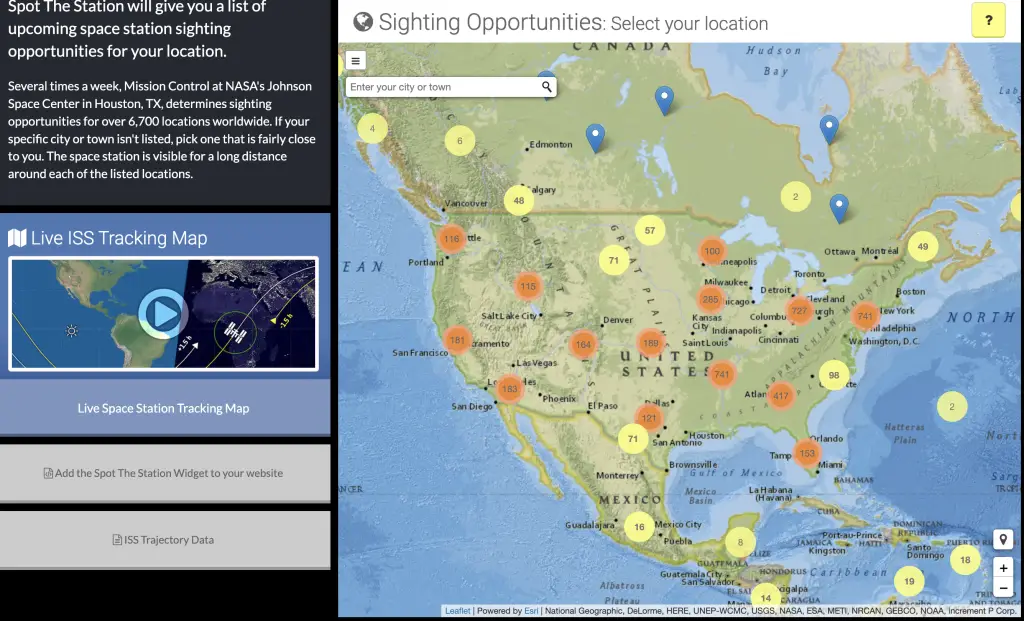
Here is a guide that can help you understand the meaning of degrees and azimuths when it comes to spotting the ISS. Additionally, it includes a brief guide on how to capture photos of the station using a compatible camera.
There are also some programs to spot ISS from your smartphone, such as
You can also watch the International Space Station live on the SatFlare website by tracking its location in real-time.
Step 2: Choose the Right Equipment
While the ISS is visible to the naked eye, using binoculars can enhance your viewing experience.
When choosing binoculars, look for ones with a magnification of at least 10x. The more the better your views would be.
Using 10X or 12X binoculars, you can observe the ISS with a more enhanced view, although its solar panels and modules won’t be visible, you can appreciate its brightness and vibrant colours.
If you want to see solar modules, consider investing in Giant binoculars of magnification more than 25X.
You may also consider using a tripod to stabilize your equipment and reduce shaking.
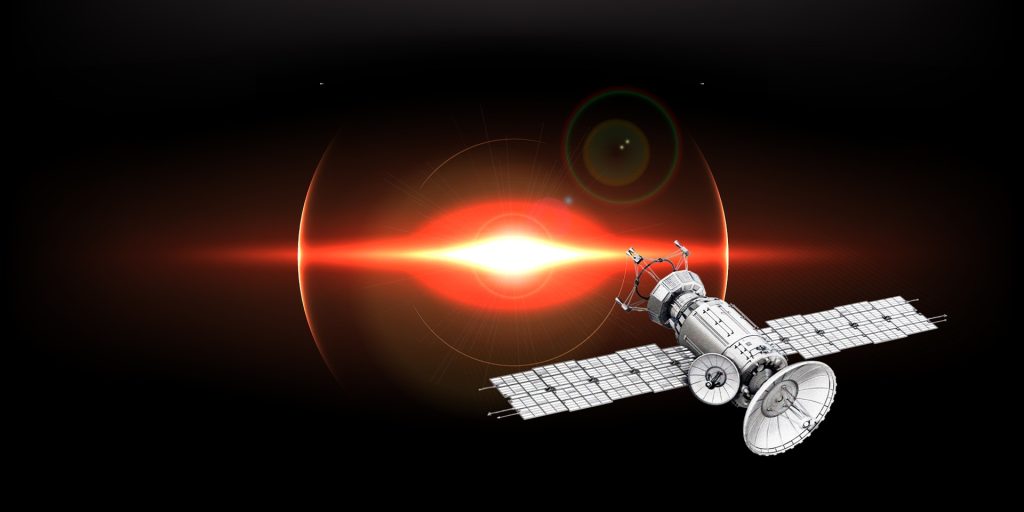
Step 3: Find a Clear View of the Sky
Locate an open space with an unobstructed view of the sky.
It is best to avoid areas with light pollution, as this can make it harder to spot the ISS.
Finding a dark location with an open view of the horizon will enhance your chances of seeing the ISS.
Step 5: Look in the Right Direction
Once you have located the ISS using the tracking app, look in the right direction.
The ISS generally moves from west to east, and it will appear as a bright, fast-moving object in the sky. You may also notice a trail of light behind it.
Step 6: Observe
Once you have spotted the ISS with your naked eye, use your binoculars to get a closer look. Adjust the focus and magnification to get the best view of the station.
With high-magnification binoculars or telescopes, you may see details such as solar arrays, structures, and even cargo vehicles docked with the station.
Step 7: Enjoy the View
Take your time to observe the ISS as it moves across the sky. High Magnification Binoculars can provide a more detailed view of the station, allowing you to appreciate its features even more.
If you’re interested in photography, consider using a smartphone adapter to capture images of the ISS.
Using Image-Stabilized Binoculars For Watching ISS
Using image-stabilized binoculars can be an excellent option for watching the International Space Station (ISS).
The ISS moves very quickly across the sky, so it can be challenging to keep it in view, especially with regular binoculars that may produce shaky images.
Also In Image Stabilized binoculars, you may not need a tripod, which will be additional fun.
You have the freedom to move around and adjust your viewing position as needed, allowing you to follow the ISS and get a better view of its features and movements. Plus, it can be a great way to challenge yourself and improve your skills in tracking moving objects in the night sky.
Check: Top Image Stabilised Binoculars
Also, We have done some full reviews on Image Stabilized binoculars.
You can Check:
ISS Through Telescopes
It is possible to track the International Space Station (ISS) using a telescope, but it requires some planning and preparation. The ISS moves quickly across the sky, so you will need a telescope with a tracking mount that can keep up with its movement.
You also will need to make sure that your telescope and tracking mount are aligned correctly and adjusted properly to keep up with its movement.
Additionally, the ISS is relatively small in size, so you will need a high-powered telescope to get a clear view.
If you are an enthusiastic amateur astronomer, you can use specialized telescope mounts that are capable of automatically tracking the International Space Station (ISS) with the help of software.
One such software is Celestron’s SkyPortal App: This app allows you to control your telescope mount and track the ISS and other satellites with your smartphone or tablet.
When it is Better to Watch ISS?— Day or Night
The ISS can be seen both during the day and at night, but it is generally easier to observe at night because it reflects sunlight and appears as a bright moving object against the dark sky.
However, it’s worth noting that the best time to see the ISS at night is when it is passing overhead during a period of darkness in your location, such as after sunset or before sunrise.
During the day, the ISS can also be observed, but it may be harder to spot as it blends in with the brightness of the sky.
Nevertheless, if the conditions are right and the ISS is passing overhead during the day, it can still be seen with the naked eye or through binoculars.
How often can you see the international space station?
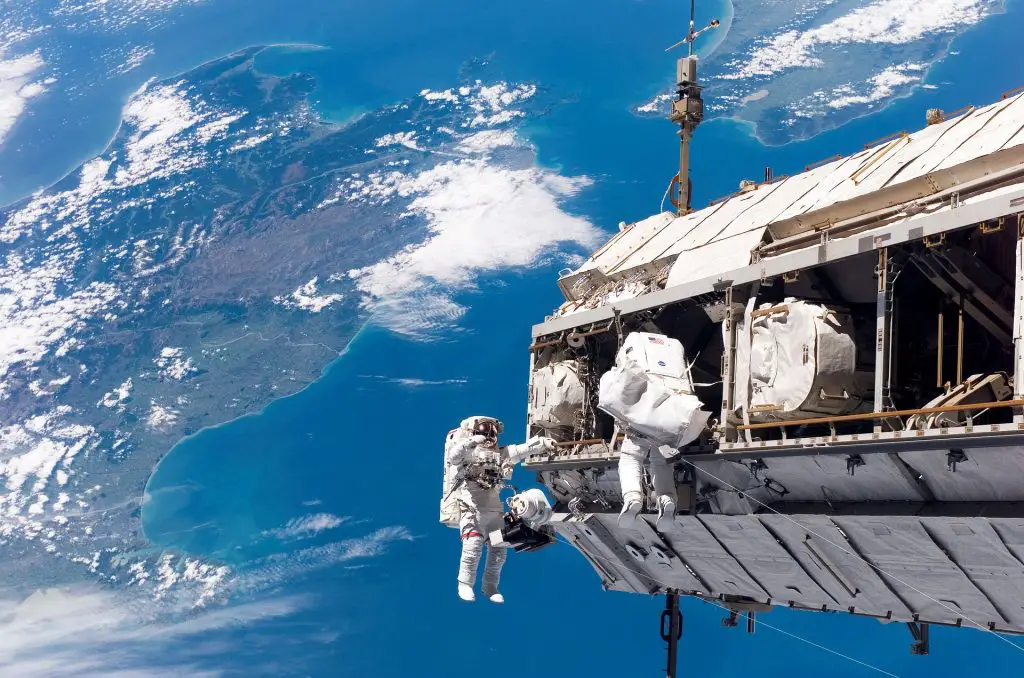
The International Space Station (ISS) orbits the Earth at an altitude of around 408 kilometers (253 miles), completing approximately 15.5 orbits per day.
This means that the ISS orbits the Earth roughly once every 90 minutes.
The frequency with which you can see the ISS from your location on Earth depends on several factors, including your geographical location, time of year, and the orbit of the ISS.
Generally, the ISS is visible from a specific location for a few minutes at a time, and it may appear several times per week at different times of the day or night.
To know when and where the ISS can be seen from your location, you can use various online resources and apps such as NASA’s Spot The Station or Heavens-Above as I have mentioned above.
These tools can provide you with the exact date, time, and location in the sky where the ISS will be visible from your specific location.
More Read: Can You See Planets Through Binoculars
An Interesting Capture Of ISS
Is it Hard to see the ISS?
Seeing the International Space Station (ISS) is not difficult, especially when it passes overhead at night.
it’s also easy to miss since it passes overhead in just about 5 minutes. Additionally, the ISS can be mistaken for an airplane due to its fast movement, but unlike an airplane, it doesn’t have flashing lights and appears much brighter.
In fact, it is one of the brightest objects in the night sky and is visible to the naked eye.
The ISS is also visible during the day, but it can be harder to spot as it blends in with the bright sky.
However, with a little knowledge and preparation, you can easily observe the ISS with your eyes, binoculars, or a telescope.
To make it easier to spot the ISS, it is recommended to look for it during its visible passes when it reflects sunlight and appears as a bright moving object against the dark sky.
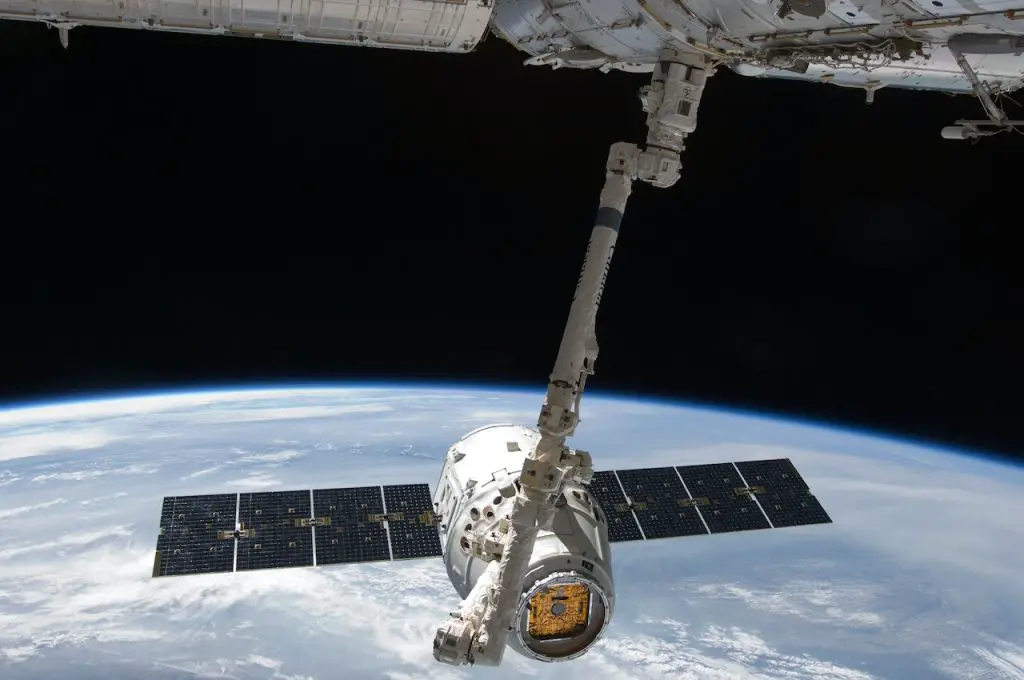
Some Fun facts about the ISS
Here are some fun facts about the International Space Station (ISS):
- The ISS is the largest human-made object in space, with a length of about 357 feet (109 meters) – that’s roughly the size of a football field.
- The ISS orbits the Earth at a speed of about 17,500 miles (28,000 kilometers) per hour, completing an orbit in about 90 minutes.
- The ISS is a joint project of five space agencies, including NASA, Roscosmos (Russia), JAXA (Japan), ESA (Europe), and CSA (Canada).
- The ISS has been continuously inhabited by humans since November 2000, making it the longest continuous human presence in space.
- The ISS is equipped with a state-of-the-art recycling system that converts urine and sweat into drinking water for the astronauts.
- The ISS has a gym, and astronauts exercise at least two hours a day to maintain their physical fitness.
- The ISS is equipped with a cupola, a small observatory that provides a 360-degree view of space and Earth.
- The ISS has been visited by more than 240 people from 19 countries, including space tourists who paid for their trips.
- The ISS has its own Twitter account, @Space_Station, where you can follow the crew’s activities and get updates on the latest experiments and missions.
- The ISS has been featured in several movies and TV shows, including “Gravity,” “The Martian,” and “Star Trek: Discovery.”
Similar Reads:
Can Binoculars See Through Clouds
Can Binoculars See Through Walls?
Conclusion: Can You See the ISS with Binoculars?
While binoculars may not have the same level of power as telescopes with larger apertures, they can still be an excellent starting point for beginners interested in watching the International Space Station (ISS).
Binoculars are portable, low-maintenance, and don’t require complicated setups, making them an ideal tool for familiarizing yourself with the night sky and learning about visual astronomy. They can also be a convenient and accessible option for observing the ISS, whether you’re in your backyard or traveling to a remote location.
As someone who enjoys stargazing, I still use binoculars to observe the night sky, especially when I want to watch the ISS without the need for a larger telescope. Binoculars are a versatile and valuable tool for any stargazing enthusiast, whether you’re just starting out or have been observing the cosmos for years.
Resource:
https://ataridogdaze.com/weightless/View-ISS.shtml
https://skyandtelescope.org/observing/all-night-vigil-with-the-international-space-station/
https://www.space.com/how-to-track-the-international-space-station

